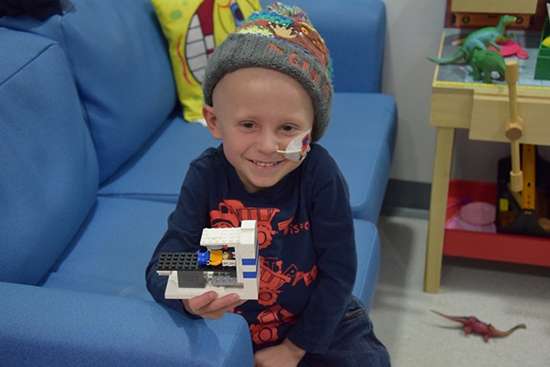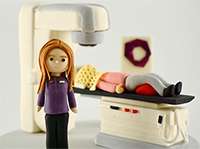LINAC LEGO Models Patient Education Julie McCrossin 2022
In 2013, Julie McCrossin was successfully treated with 33 sessions of radiation therapy and weekly chemotherapy for Stage Four oropharyngeal cancer caused by HPV.
Every cancer patient and their family should have the opportunity to see a model Radiation Therapy machine or LINAC before the first treatment with radiation therapy.
If you can’t read, or you can’t speak the language, or you are too shocked by your cancer diagnosis to absorb information – seeing a model, with a little model patient on it, means you can see what the treatment will involve.
To see is to understand.
In this 12 minute video, Julie shows examples of Model LINACS from all over the world and she explains what her treatment involved & how the team saved her life.
Thank you to Varian for the opportunity to give this presentation to an on-line audience of over 430 people globally.
Connor’s Bricks
Connor Brennan is a young man from Adelaide who has been creating custom Lego designs since 2016.
He has won awards for his designs.
He has created a variety of designs for models of Linear Accelerators or LINACs since his grandmother was treated with radiation therapy.
See Connor’s Bricks Custom LEGO Designs.
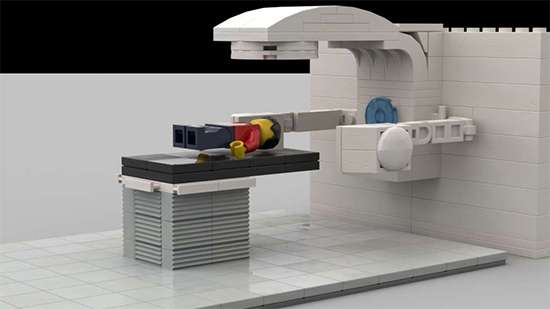

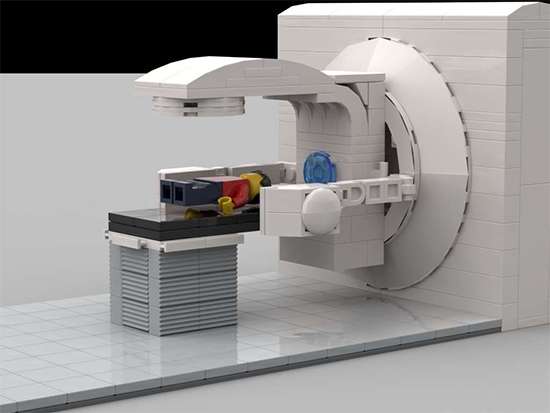
In mid 2018 Connor’s Grandmother was diagnosed with a tumor on her jaw that required radiotherapy treatment.
At around the same time, Connor was approached by Dr. Sean Geoghegan, State Director of Radiation Oncology Medical Physics at the Royal Adelaide Hospital, to take part in a project to design and create a Lego model of a Linear Accelerator (Linac) for children who are about to undergo treatment for cancer to build, play with, and reduce any anxiety they have for the treatment.
Two models have been designed, one is a kit to be provided to children with instructions for them to build, the other, more complex model, has motors controlled via bluetooth from a phone app.
Connor’s story and instructions on how to build a Model Linac Set are available from Connor’s Bricks.
The motor-controlled version is available to buy from Model Linac.
Model LINAC, St James University Hospital, Leeds UK
This model LINAC is an exact replica of the radiation therapy machine at St James University Hospital in Leeds UK.
Julie McCrossin travelled to Leeds from Australia to see this Model LINAC. She explains how the model is used in this video.
Julie saw this model for the first time on Facebook and she was so impressed she decided she wanted to meet the team in Leeds who made it.
She went there in 2017 and learnt so much about how to support children and young adults who are receiving cancer treatment.
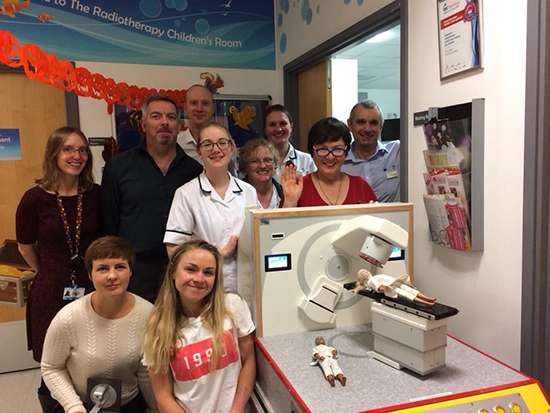
Julie McCrossin with multidisciplinary cancer team members in 2017
Little LINAC, Leeds UK
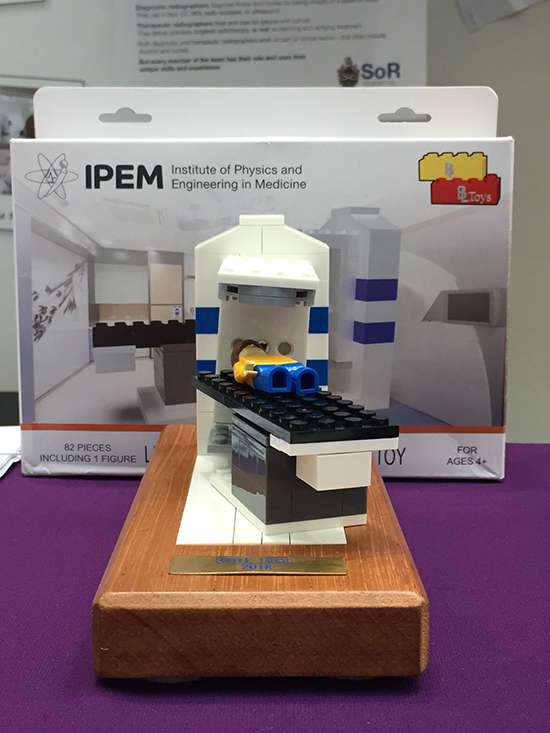
Little Linac building brick kit for children undergoing radiotherapy treatment for cancer, to build a model linear accelerator, containing 82 building blocks, box and instruction leaflet, developed by Professor David Brettle, Institute of Physics and Engineering in Medicine (IPEM) in collaboration with manufacturers Best-Lock Ltd, 2019.
Using the 82 building blocks, a child can make four of the machines they may encounter during their cancer treatment – a linear accelerator or linac, one of the most common radiotherapy machines, a MRI scanner, a CT scanner and a gamma camera.
It is hoped that through play the stress and anxiety undergoing treatment may be reduced.
Radiotherapy for anyone, especially children, can be a daunting experience, particularly as they must be alone during the treatment due to the radiation risks.
As a way of signalling the end of their treatment, children are then encouraged to come up with new ways of using the bricks.
David Brettle came up with the idea for the ‘Little Linac’ during his time as President of the IPEM (Institute of Physics and Engineering in Medicine).
The idea was trialled at Leeds Teaching Hospitals NHS Trust before being launched in September 2018.
IPEM partnered with the British Institute of Radiology, the Royal College of Radiologists, and the Society and College of Radiographers to spread the word about the Little Linac kits.
IPEM hope to provide the kits free of charge to children undergoing radiotherapy in the United Kingdom
